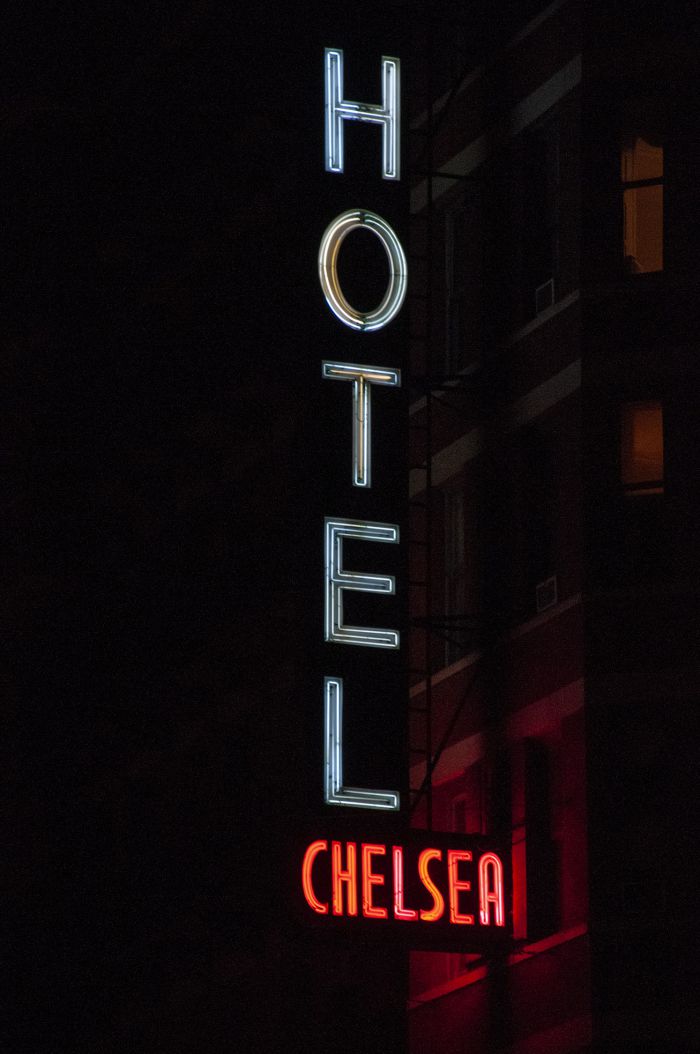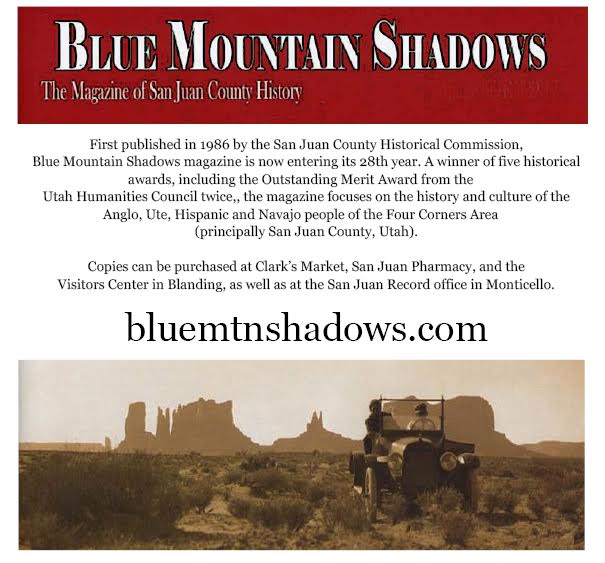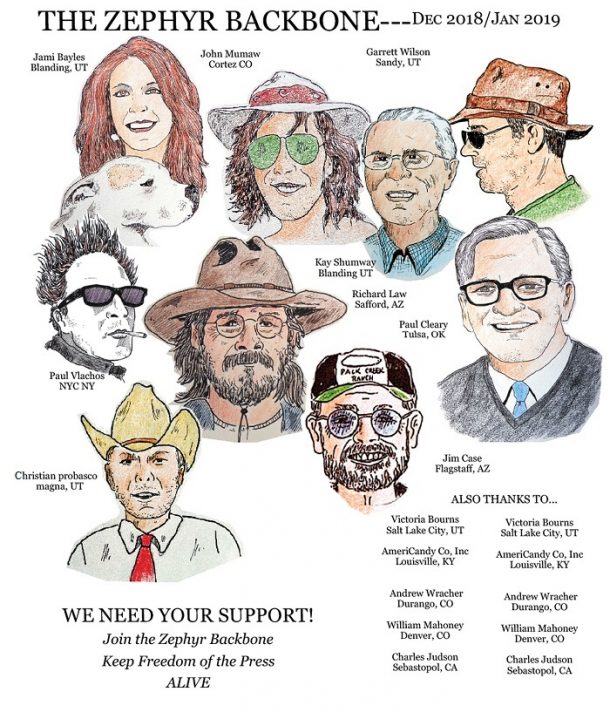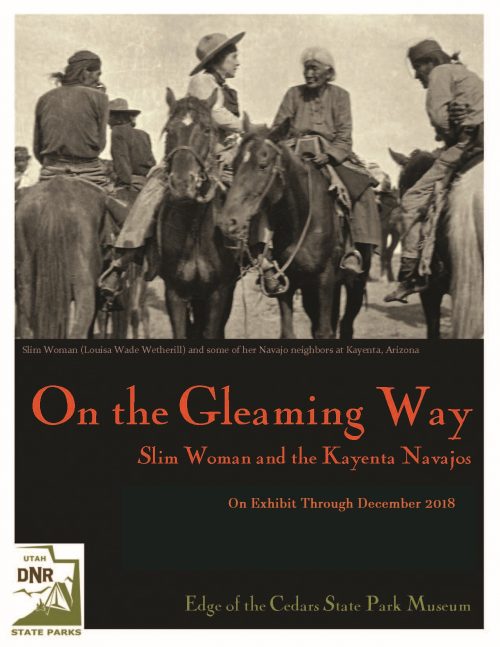Paul Vlachos is a New Yorker who understands The West. And he is a New Yorker who understands New York. Wherever Paul goes, he finds signs of life…
As soon as you click the camera shutter on a photograph, your photo is part of the past. Even if you look at it immediately, you’re looking at something that already happened. Before digital photography took over, it was even more obvious. You might have to wait a day, usually a week or two before you saw your photographs. That was half the fun of film, seeing what you actually got. The longer a photo sits, and the longer you manage to preserve it from the inevitable decay or accidental destruction, the more dramatic the effect gets.
What’s so interesting about the past? I’m not sure I can tell you, although I know I have that particular affliction. Not everybody shares this fascination. Some of us are forward-looking souls. Others live too much in the past and that’s no good, either. People argue that animals have no sense of anything but the present, but we don’t really know if that’s true or not. People argue that the ability to think about the future is one thing that differentiates humans from other species. That may be true. I don’t know for sure. I do know that the past can evoke strong memories and that looking at a photo is like rewinding time in my head. As with good fiction, a photo can evoke memories and feelings. I could ramble on. This is a subject close to my heart, despite my constant struggle to stay in the moment. The moment is all we have, I keep telling myself. But, I then ask myself, what do we have without the past? Not much. One of the cruelest fates is to lose one’s memory. I could ramble on, but I won’t.
I began to look through photos for this column and decided, on a whim, to look at shots from ten years ago, from the year 2008. I began to see stuff that is no longer with us. That became an idea, to just talk about stuff from 2008 that was now gone. I then found a photo of my circa-2008 cellphone, a scratched up LG model that I was photographing in order to test a macro camera lens. Looking at this phone made me start to think about all of the other stuff that we have lost since 2008, the stuff that’s harder to document in photos. I’ll present five photos here, all of them taken in 2008.
 1. The Chelsea Hotel, also called the Hotel Chelsea or just “The Chelsea.” It was still very much in business ten years ago. It was closed a few years ago “for renovations” but, in New York City, that means it is being turned into luxury housing. The Chelsea of legend is dead. My first apartment, a sub-ground studio that I shared with my soon-to-be wife, was on 23rd and 10th Avenue. I would trudge on 23rd Street past the Chelsea every day on my dismal, desperate walk to the subway and the terrible office jobs I held in the early 1980s.
1. The Chelsea Hotel, also called the Hotel Chelsea or just “The Chelsea.” It was still very much in business ten years ago. It was closed a few years ago “for renovations” but, in New York City, that means it is being turned into luxury housing. The Chelsea of legend is dead. My first apartment, a sub-ground studio that I shared with my soon-to-be wife, was on 23rd and 10th Avenue. I would trudge on 23rd Street past the Chelsea every day on my dismal, desperate walk to the subway and the terrible office jobs I held in the early 1980s.
That old pile of bricks felt as though it were alive. It exuded something that I can only describe as “soul” whenever I walked by. Everybody lived there at some point: Allen Ginsberg, Jack Kerouac, Mark Twain, Uma Thurman, Jane Fonda, Edie Sedgwick, Patti Smith, Tom Waits, Bob Dylan, Leonard Cohen, Jimi Hendrix and far too many others to mention. People were born there and stayed until the bitter end. People died there, some in notorious circumstances. The hallways felt like a time capsule. It was only a matter of time before the developers got their hands on it. “The developers,” an awful euphemism, is the catch-all phrase in New York City for anybody who is destroying something and putting up something new in its place. They almost always get massive tax breaks and deliver nothing in return to the public. In the Chelsea’s case, the facade will remain the same, since it’s landmarked, but the living spirit of the old place is dead.
 2. The Western Hotel, on Fremont Street, in the old downtown section of Las Vegas, Nevada, is not nearly so old as the Chelsea, but 40 years in Vegas time, it could be argued, is equivalent to 100 years anywhere else. Vegas is like New York in that it has no compunction about ripping itself down and rebuilding itself. It hasn’t been doing it as long as Gotham, but it’s just as voracious. The Western Hotel and Casino may not have been famous for much of anything – at least, nothing that people will talk about – but it was, apparently, the world’s largest bingo hall. It eventually became a placeholder for development on land that was becoming too valuable for an old-style Vegas joint.
2. The Western Hotel, on Fremont Street, in the old downtown section of Las Vegas, Nevada, is not nearly so old as the Chelsea, but 40 years in Vegas time, it could be argued, is equivalent to 100 years anywhere else. Vegas is like New York in that it has no compunction about ripping itself down and rebuilding itself. It hasn’t been doing it as long as Gotham, but it’s just as voracious. The Western Hotel and Casino may not have been famous for much of anything – at least, nothing that people will talk about – but it was, apparently, the world’s largest bingo hall. It eventually became a placeholder for development on land that was becoming too valuable for an old-style Vegas joint.
When I took this shot, I was drawn by the neon, but there was also something run-down about it that appealed to me. It closed three years later, in 2011, and I don’t know what’s happening on that little patch of desert at the moment, but the Western is dead. If it had lasted another 50 years, it might have attained some immortality, such as the El Rancho in Gallup or the much more notorious El Rancho in Barstow, California. Unfortunately, this child of 1970 would not live past the age of 41.
 3. I shot this sign in an Ohio town whose name I did not write down. I almost didn’t take it at all. I was mono-focused, hauling back home from California, and likely stopped for coffee or food, saw this at some point, shot it, and then moved on. I have learned that, if I want to take a photo of something, I should never pass it up. The next time you circle through again, it may be gone.
3. I shot this sign in an Ohio town whose name I did not write down. I almost didn’t take it at all. I was mono-focused, hauling back home from California, and likely stopped for coffee or food, saw this at some point, shot it, and then moved on. I have learned that, if I want to take a photo of something, I should never pass it up. The next time you circle through again, it may be gone.
As for this shot, I liked the colors of the sign. I also liked that it mentioned mimeographs, a technology so thoroughly dead that I would bet anyone under the age of 40 has not even heard the word “mimeograph.” Mimeographs were around for many years in one form or another. They were a cheap way to make copies and, before photocopiers, such as Xerox machines, they were the standard in most schools. You would usually type, but you could draw, on a purple mimeograph stencil, then load it into the machine and run off copies. It was a sloppy process, the copies were a bit fuzzy, and the stencils didn’t last long. That being said, it was the technology at hand. I used one in high school, in the 1970s, to run off copies of a satire magazine that I was co-editing. That was close to the end of the run for mimeographs, as photocopiers were just then becoming cheap and ubiquitous.
This sign was obviously old by 2008 and I doubt the store that commissioned it was still in business. It got me to thinking, though, about the things that have disappeared along with the buildings and signs that I often shoot. Technologies, habits, ways of life – they all die, as well. Typewriters went from an extinct species – killed by computers – to a niche retro accessory. Almost nobody uses them for serious work anymore, though. Mimeographs are a dim memory. Vinyl records and film cameras have made minor comebacks, but only because they became self-consciously desirable to small groups of people who were looking to experience or create with the old technology.
 4. Video stores are another dead breed and I don’t think we’ll see them returning the way that vinyl records have. This store, in Sunset Park, Brooklyn, was clearly not just another video store. I never entered it, but it was almost certainly a porn emporium. Next door to it, in this near-deserted waterfront neighborhood at the time, was a sex toy shop. The “24 HRS” thing is another tip off, as nobody is going to visit a video store in the middle of the night for Disney movies.
4. Video stores are another dead breed and I don’t think we’ll see them returning the way that vinyl records have. This store, in Sunset Park, Brooklyn, was clearly not just another video store. I never entered it, but it was almost certainly a porn emporium. Next door to it, in this near-deserted waterfront neighborhood at the time, was a sex toy shop. The “24 HRS” thing is another tip off, as nobody is going to visit a video store in the middle of the night for Disney movies.
Still, renting VHS and the occasional Betamax tape was a daily ritual for millions of people. They frequented Blockbuster and the other independent video stores of the late 1970s and 1980s, . The internet rendered that – along with porn emporiums – extinct for the most part. Red Box machines may still exist, but most people now stream movies or just watch stuff on cable. The days of picking up a movie are over. It’s another thing that was on the way out by 2008 and is almost completely gone now. There is nothing inherently good or bad about this. I’m not making a value judgement, just taking note. One could argue for the convenience of streaming and downloading movies via Hulu, Netflix or Apple TV. One could also reminisce fondly about walking through video stores, reading the copy on frayed tape boxes, and making small talk with the counter people. That way of life is now a thing of the past. People are more likely to watch something on their computer than they are to sit down, pop a tape into the machine, and hit the “Play” button.
 5. Since I have come this far down the dismal, maudlin road of nostalgia that I embarked upon, I’ll finish with this photo, shot in the lobby of Pier 40, on New York’s Hudson River. It was the last major pier built in New York and it was constructed when the city’s commercial waterfront was already dying. The plaque out front that commemorates its opening mentions “The North River,” which is what many in the city called the Hudson River into the 20th Century. So, it’s a pier that was built too late and it mentions a river whose name is also gone.
5. Since I have come this far down the dismal, maudlin road of nostalgia that I embarked upon, I’ll finish with this photo, shot in the lobby of Pier 40, on New York’s Hudson River. It was the last major pier built in New York and it was constructed when the city’s commercial waterfront was already dying. The plaque out front that commemorates its opening mentions “The North River,” which is what many in the city called the Hudson River into the 20th Century. So, it’s a pier that was built too late and it mentions a river whose name is also gone.
This bank of phones was in one of the large entry halls. I have not been there in years, but they may still exist. In 2008, you could still get a dial tone if you picked up one of the receivers. I’m not certain you can now. And those phone books? If they are still there – and that’s highly unlikely – I can guarantee you they have not been updated in over 10 years. And why, do you ask, is this the case? You know where I’m going.
The cellphone, which was already spreading like a wildfire by 2008, became a firestorm over the following ten years. Once the iPhone was introduced, in 2007, along with its Android cousins, many things began to disappear that people could never have imagined dying just a few years earlier. Public decorum may have been the first thing to go, with people so absorbed in their little screens that they don’t look where they are walking. People talk loudly on their phones in places that used to be silent. People hold their phones in front of them and shout during video calls with each other. The subway cars, which used to be filled with the rustle of newspaper pages turning, are filled with heads bowed before tiny glowing screens. Where people might have had conversations in the street or in the hallway or the grocery store, they now are lost in little cyber worlds as they walk around. Smart phones have created bubbles around us.
I could go on, but I’ll save it. I’m working on a project related to this and parts of it may one day preview in the pages of the mighty Zephyr, but I’ll leave you now with one question. You all know what smart phones have given us – and I’m no Luddite, I am aware of how they have made life easier in many ways – but I’ll ask you all now to think about what they have taken away, about what has disappeared in the past 10 or 11 years since smart phones have taken over the world.











It’s a pleasure to read your notes and to look at your photos, Paul. I appreciate your efforts.